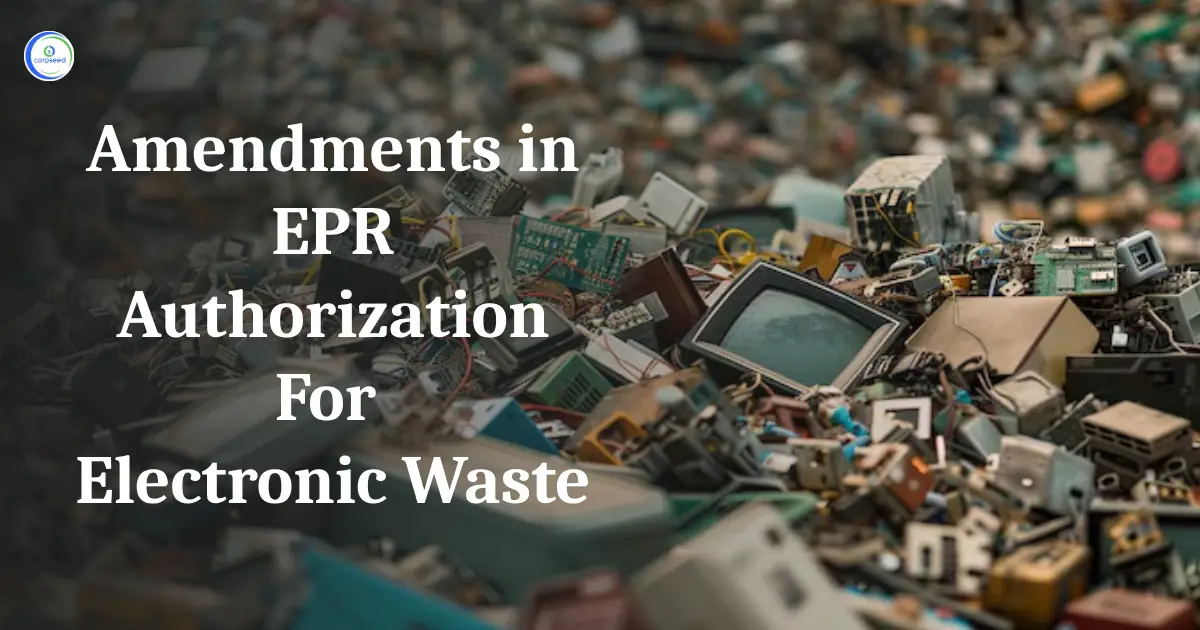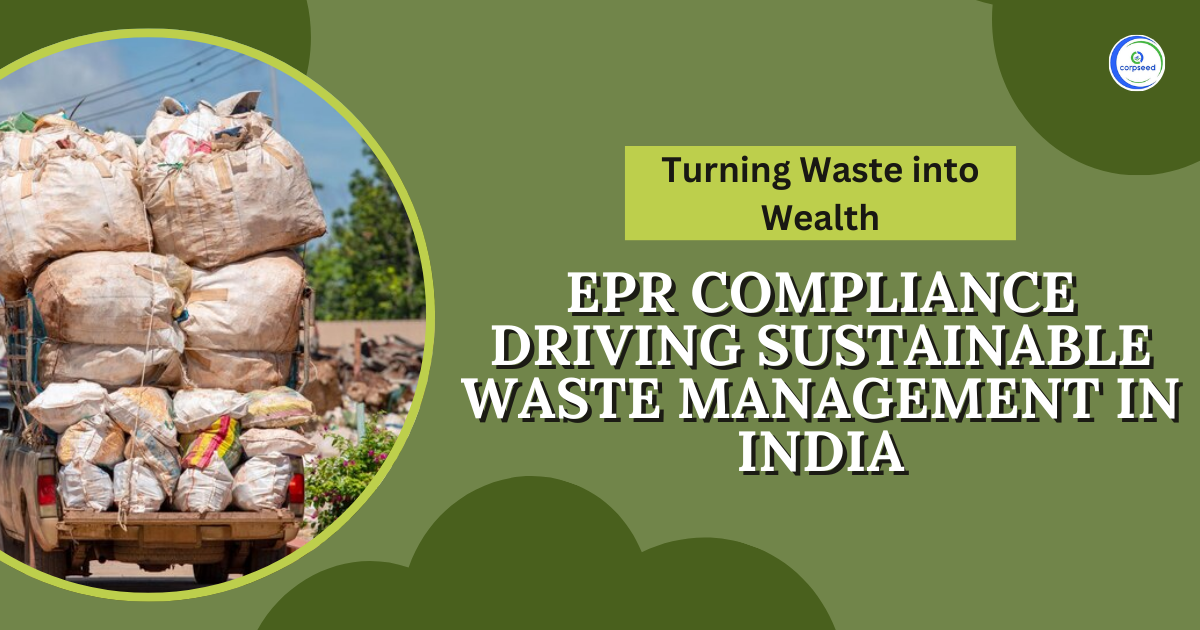Introduction: EPR Action Plan
If you have ever attempted to manage your Extended Producer Responsibility for plastic waste, you must have noticed the requirement of the EPR Action Plan to get authorisation from the Central Pollution Control Board. This is a compulsory document you must submit in a prescribed format along with the application form for EPR Registration. The importance of this document is that the CPCB assess your plan and determines whether you will be able to meet your EPR obligations arising out of your business or not based on this action plan. The board decides on that basis whether you should get EPR Authorisation or not.
Table of Contents
--------------Blog Contact Form-------------
Definitions of Terms Used
What is Plastic Waste?
Plastic Waste is defined under the Plastic Waste Management Rules. It is the waste generated from materials that contain high polymers as an ingredient such as vinyl, polypropylene etc. The parties need EPR Registration if they are dealing with the generation or processing of plastic waste.
What is EPR?
Extended Producer Responsibility is the obligation imposed on the producers, importers and brand owners for managing the end-of-life waste of their products. It is an effective policy to discourage the manufacturing of products that are harmful to the environment or hard to recycle and also dispose of the generated waste from the products previously manufactured and sold.
Read Our Blog: What is an EPR Certificate?
What is an EPR Action Plan?
The EPR policy prescribes various compliances. One of them is to take authorisation from the Central Pollution Control Board. For this purpose, producers need to submit the EPR Action Plan along with other required documents. EPR Action Plan talks about the future planning of the producer to mitigate his EPR liability set for the year and provides an estimation of whether the target is achievable as per the plan or not.
EPR Action Plan Types for Plastic Waste
There are multiple ways to fulfil the EPR liabilities under the Plastic Waste Management Rules. The objective is to collect and process the plastic waste and the method you are using for this has to be mentioned in your EPR Action Plan. You can choose any of the following methods when drafting the EPR Action Plan to receive the EPR Authorisation-
- Using Own Distribution Channels
- With the Engagement of Urban Local Bodies (ULBs)
- Through Waste Management Agency (WMA)
Through Own Distribution Channels
In this method, the Producers collect the plastic waste from their own distribution channels. The collection should preferably be from the same state or union territory where the products are distributed. The quantity of waste should be equivalent to the estimated quantity of generated plastic waste. The producers need to get into a contract with the registered recycler and send the collected waste to them regularly to get their EPR obligation fulfilled.
Through Urban Local Bodies (ULBs)
Producers, Importers and Brand Owners can also get into the partnership with urban local bodies for the collection, segregation, and transportation of plastic waste. The quantity of collected waste should again be equivalent to the generated plastic waste and it should be recycled only at the registered recycler. The producers operating on a pan-India basis should engage with the Urban Local Bodies of all five zones of the country and cities of all tiers must be covered.
Through Waste Management Agency (WMA)
The Waste Management Agencies get into a contract with the Urban Local Bodies of the country to ensure the collection of the waste. These agencies also have contracts with registered recyclers. Thus the agencies provide a one-stop solution for the collection and processing of plastic waste for the producers. The producers engage with these agencies to get their liabilities fulfilled with ease because the agencies can collect and recycle waste on behalf of these producers. But these agencies should engage with all five zones and three tiers of cities in the country to ensure appropriate coverage for waste collection.
Apart from these three basic EPR Action Plan methods, you can also choose any other way or a combination of the above methods. You also need to mention the same choice in the action plan along with the other details as per its format.
Read Our Blog: How to Apply Online For Extended Producer Responsibility EPR India Authorization
EPR Action Plan Format
Based on the above-mentioned ways of fulfilling the Extended Producer Responsibility, the producer can draft the EPR Action Plan and mention the method he is using for the fulfilment of his waste recycling target. The EPR Action Plan should have the format given below and contain all the mentioned details as prescribed-
First Section - Basic Details
The basic details in an EPR Action Plan include the name, address, and contact info of the unit. The Producer, Importer and Brand Owner should write their business name and address in this column along with the contact details of the responsible person. You also need to submit details regarding the type, quantity and method of plastic waste collection. There will be three figures of quantity to write in the EPR Action Plan-
- Quantity based on the waste type
- Estimated quantity of post-consumer waste generation
- Total Quantity Covered under the EPR Action Plan
The last two quantities are mentioned year-wise so that the board can accordingly calculate next year’s liability of the producer.
Second Section - Own Distribution Channel
You need to fill this section if you are using your distribution channel for waste collection. It requires details regarding the distribution network, pan India coverage, estimated quantity of collected waste, and mode of utilisation for such waste. The producer must also share the details of the recycler who is recycling his waste and include his registration number as obtained from the CPCB. The producer can utilise the collected waste in numerous ways hence he should provide respective details in this section. He should also mention the breakup of the waste quantities based on the mode of utilisation it went through, for example, Waste Recycler, Co-Processing, Road Construction etc.
Third Section - Engagement of Urban Local Bodies
This section is relevant to those who have worked in collaboration with Urban Local Bodies for the collection of waste. The producers must mention a list of all such ULBs in this section. He must also mention the documents in support of the engagement with the ULBs. Further details include pan-India coverage, the break-up of the waste collected into categories, and the utilisation-based waste break-up. The producer needs to mention the mode of utilisation of waste used by him. These modes can be recycling, co-processing, and road construction. The plan should also include the details of the recycler and supporting documents for such engagement.
Fourth Section - Engagement of Agency
If the producer chose to go for a waste management agency to complete his EPR obligations then he should fill out this section. It must have a list of involved waste management agencies and the details regarding pan-India coverage, the break-up of waste, and the mode of utilisation. Apart from these, this section of the EPR Action Plan must contain information on the producer’s engagement with other waste management bodies involved in this method with the supporting document of their engagement and in the case of the recycler, he should also provide the CPCB Registration number.
Fifth Section - Other Modes of Waste Collection and Processing
If the Producer, Importer or Brand Owner wants to use any other method to collect, process or utilise the plastic waste then he is free to do that as long as the system ultimately fulfilling the waste management requirements prescribed under the waste management rules. The producers can also use a combination of the above-mentioned modes. In any case, they need to provide all details as per the given format which includes the details of the entities involved, documents in support of such engagement, coverage of the EPR Action Plan, break-up of the plastic waste, mode of utilisation and the details of recycler to verify his registration with the CPCB.
Conclusion
The government has provided the rules and regulations for EPR management and prescribed the processes to follow but it delegates the duty to prescribe required documents and their formats to the Central Pollution Control Board. It publishes the Standard Operating Procedure (SOP) for the EPR Authorisation which prescribes the documents and their formats. EPR Action Plan is also a part of these documents and the format prescribed by the CPCB’s Standard Operating Procedure includes the description of plastic waste in a detailed manner and the details of involved entities along with the recycling and reusing methods. It makes sure that the producer has provided every critical information when applying for the authorisation and this particular format helps the board to easily grasp all the details, predict the feasibility of the methods used by the producer and accordingly accept or reject his application for EPR Authorisation.
This portion of the site is for informational purposes only. The content is not legal advice. The statements and opinions are the expression of author, not corpseed, and have not been evaluated by corpseed for accuracy, completeness, or changes in the law.
BOOK A FREE CONSULTATION
Get help from an experienced legal adviser. Schedule your consultation at a time that works for you and it's absolutely FREE.





.webp)



